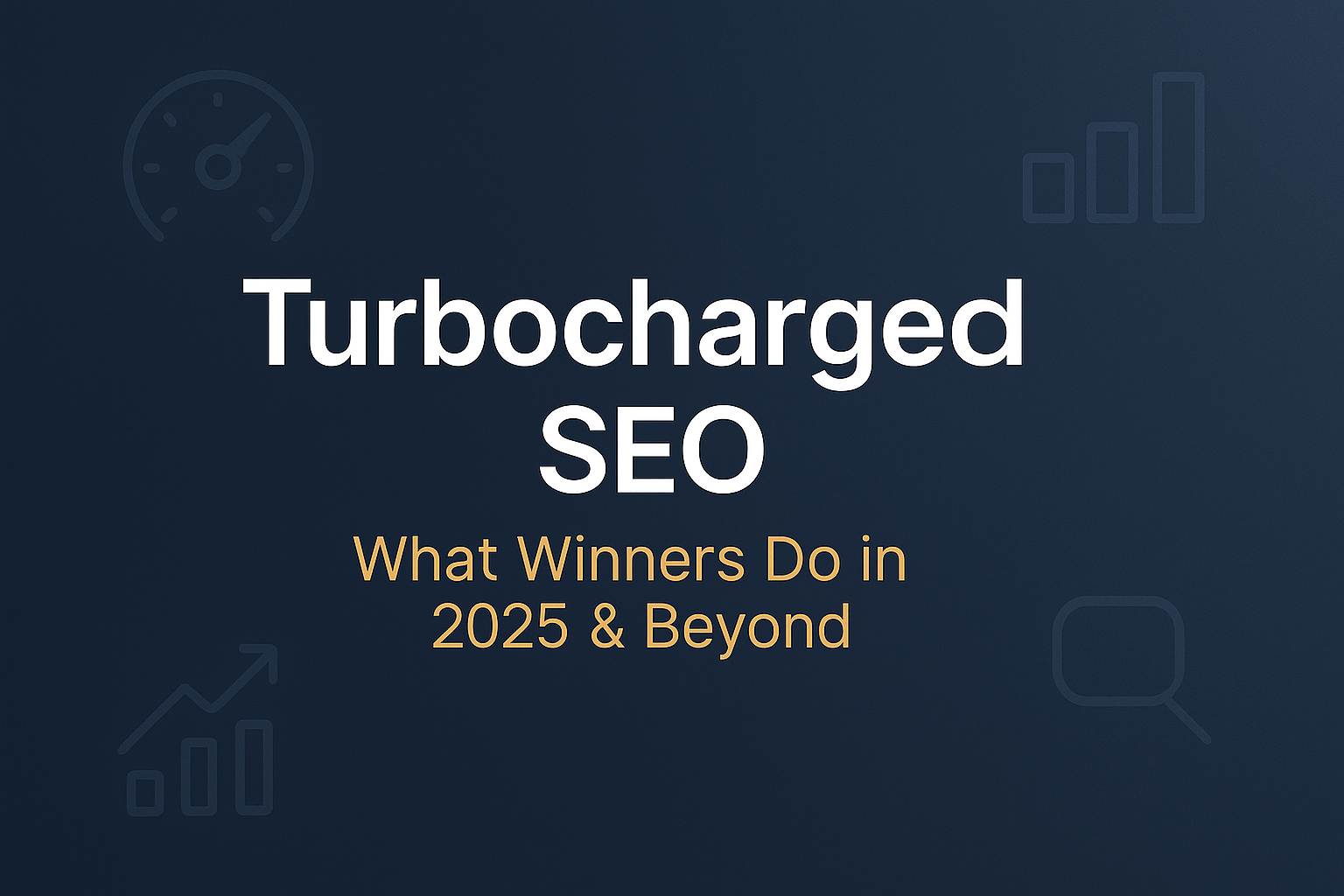The Real 2025 SEO Game: Why Most Brands Remain Invisible, and What Winners Do Differently
SEO in 2025 isn’t about checking boxes on audits. It’s about weaponising change—AI, user signals, and market volatility—to leave competitors fighting for scraps. Still following old playbooks? Then you’re ceding ground. Here’s how high performing brands will dominate organic traffic next year, and what nearly everyone else is missing.
Related reading: SEO Trade-Offs in 2025: When Chasing Search Intent Hurts Your Brand Story.
1. AI-Powered Content: Stop Automating, Start Outmanoeuvring
Most brands see AI as a shortcut. High performers use it for insight, not duplication. They deploy advanced AI to target gaps the competition misses, build authority assets, and predict user needs before they trend.
What Works in 2025
- Build content hubs around real search intent, not broad topics.
- Use AI to test, refine, and enhance content — but rely on human editors for nuance.
- Find the “adjacent possible” — topics one step away from your current traffic core that deliver incremental, high-intent growth.
Related reading: AI and Automation for Business Efficiency.
2. E-E-A-T: From Lip Service to Competitive Advantage
Google’s E-E-A-T (Experience, Expertise, Authoritativeness, Trust) now separates thought leaders from pretenders. Shallow authority signals no longer survive scrutiny.
What Winners Do
- Feature authored insights from named professionals — ideally your team or trusted partners.
- Publish case studies and data backed stories from your operations.
- Syndicate content on credible third-party platforms to build trust signals that algorithms and humans recognise.
Related reading: Why Technology Amplifies, Not Replaces, Strategic Thinking.
3. Core Web Vitals & Experience: Beyond Speed to Stickiness
Speed is just the baseline. The new battleground is experience. Google now evaluates whether users engage, not just land.
Where Most Brands Fail
- Mobile first design and fast load times are no longer differentiators.
- Sites that reward the click — through clarity, interaction, and satisfaction — win engagement metrics.
High Impact Moves
- Adopt headless CMS or PWA frameworks to deliver instant content.
- Use micro-interactions (hover reveals, click animations) to make engagement measurable.
- Pair UX improvements with CRO discipline for true commercial return.
Deep dive: Why Landing Page Best Practices Fail: Context, Complexity, and the New Rules of CRO.
4. Video & Mixed Media: The Visibility Multiplier
Google’s SERPs now prioritise rich, visual content. Static copy alone doesn’t cut it.
The Upgrade Path
- Integrate custom videos or explainers into every top-funnel page.
- Use AI driven A/B testing to refine thumbnails and captions.
- Build interactive media — quizzes, calculators, clickable infographics — to convert skimmers into subscribers.
Related reading: The 2025 AI Stack: 10 Tools Every Growing SME Needs.
5. Advanced Schema: The Shortcut to AI Visibility
Schema markup isn’t optional — it’s the context engine for your brand. Google and AI overviews rely on structured data to summarise answers and feature authoritative content.
Tactical Execution
- Mark up reviews, FAQs, and how-tos aggressively.
- Monitor which schema types trigger rich results and featured snippets.
- Keep schema current — Google’s beta formats now evolve quarterly.
Standard SEO vs. High-Impact SEO in 2025
| Dimension | Most Brands | High-Performers |
|---|---|---|
| Content Creation | AI for speed | AI for original insight |
| E-E-A-T | Generic author bios | Expert led case studies |
| UX | Responsive templates | Interactive experiences |
| Media | Static visuals | Video & dynamic content |
| Schema | Outdated basics | Realtime structured data updates |
👉 Read more about predictive SEO shifts in McKinsey’s 2025 Tech Trends Report.
FAQ
- Is AI-generated content safe for SEO in 2025?
- Yes — but only if reviewed, fact checked, and humanised. Unoriginal AI output triggers penalties and trust loss.
- How can SMEs build E-E-A-T without big-name experts?
- Use real client stories, co-authored insights, and LinkedIn thought leadership to demonstrate credibility.
- Which technical priorities matter most now?
- Beyond Core Web Vitals, prioritise API-based content delivery, schema optimisation, and conversion focused UX.
- Is video necessary for B2B sectors?
- Absolutely. Even technical audiences engage more with video explainers and animations than with static guides.
- Does schema markup future-proof rankings?
- It boosts zero-click visibility, but only when paired with value-rich, experience-led content. Schema is a tool — not a substitute for strategy.
Conclusion
The SEO race in 2025 isn’t about checking algorithm updates — it’s about adapting faster and thinking deeper.
The brands that combine AI precision, authentic expertise, immersive UX, and structured data discipline will own organic traffic for the next decade. Everyone else? They’ll still be tweaking meta tags while the winners rewrite the rulebook.
Ready to clear the grey and dominate search in 2025? Book a discovery call with Mostly Grey Digital and turn insight into sustainable growth.
Key Takeaways
- AI should amplify insight and originality, not replace it.
- E-E-A-T and personal credibility now drive ranking resilience.
- UX and Core Web Vitals must evolve beyond speed.
- Mixed media builds brand visibility across new SERP formats.
- Schema is your visibility engine for AI generated answers.
